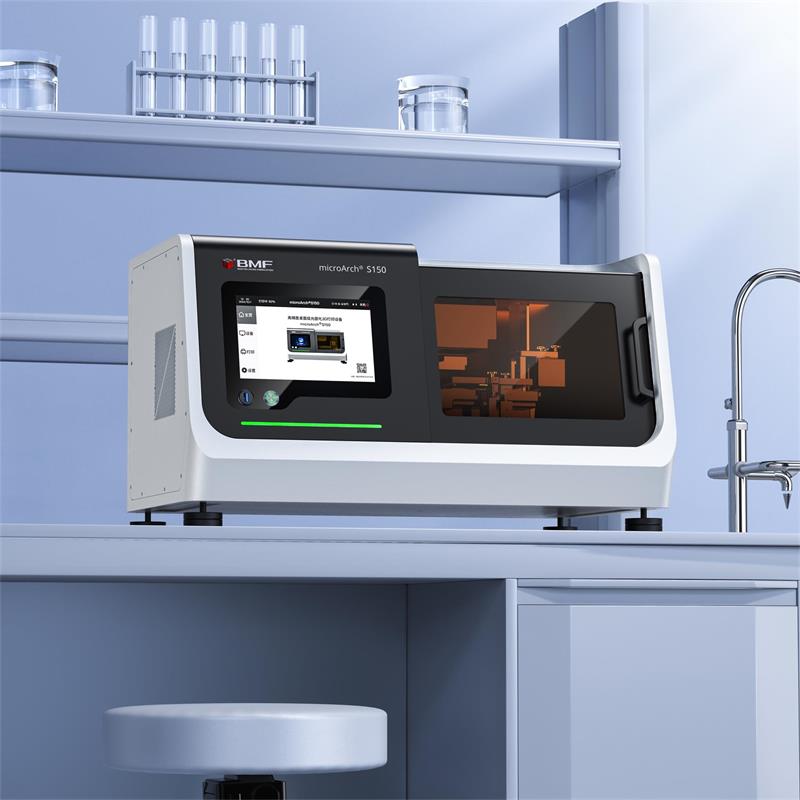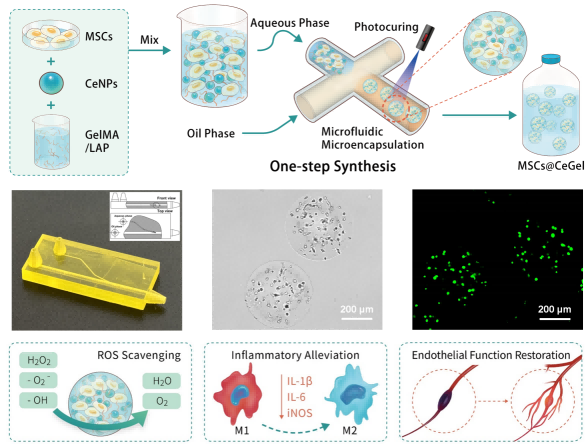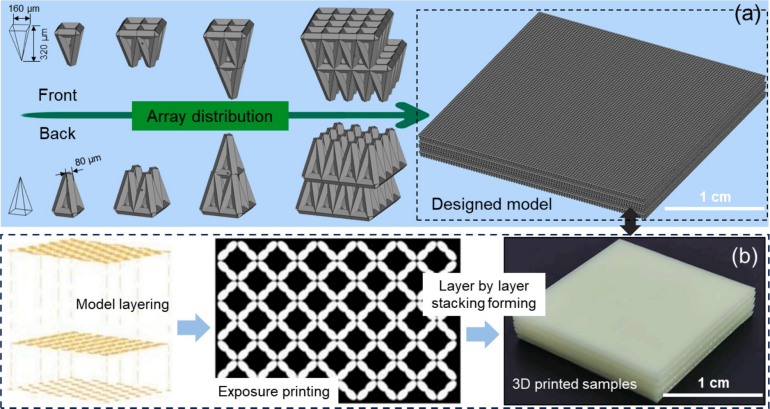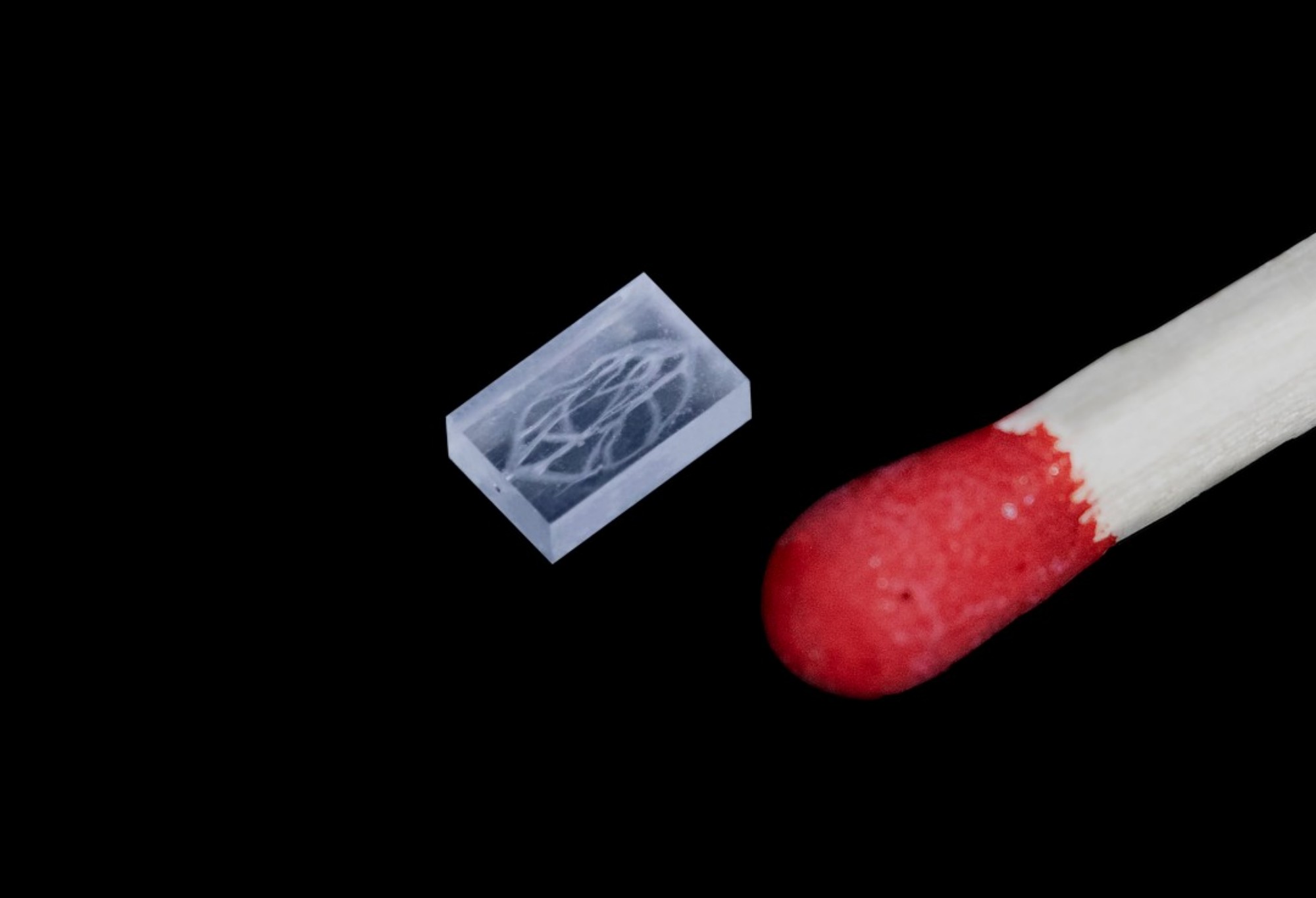Hidden within devices no bigger than a postage stamp, microfluidic chips hold the power to transform entire industries. These miniature platforms, etched with labyrinths of channels, chambers, and valves no wider than a human hair, can orchestrate the movement of tiny fluid volumes with surgical precision. They serve as the invisible engines behind rapid disease diagnostics, high-throughput drug discovery, environmental monitoring, and even next-generation manufacturing processes. In fields where speed, accuracy, and portability are paramount, microfluidic chips are quietly redefining what is possible — bringing laboratory-grade performance to the palm of a hand.
Yet, for all their promise, microfluidic chips have been held back by one persistent barrier — the challenge of manufacturing them with both complexity and precision, at scales that approach the microscopic. Enter micro 3D printing: a technology that is redefining not only how these chips are built, but what they can become.
BMF’s micro 3D printing technology: Breaking the Design Barrier
Unlike conventional manufacturing, micro 3D printing constructs components layer by layer, enabling virtually unlimited geometric freedom. This is particularly powerful at micro scales, where the technology can fabricate features as small as a few micrometers.
This technique unlocks several transformative advantages for microfluidic chips.Designers can now create fluidic networks that weave above and below each other, integrate vertical features, or embed non-fluidic components directly in the structure.Sensors, valves, mixers, and even optical components can be printed in-place, reducing the need for post-assembly.A concept can move from STL to physical prototype within hours, accelerating R&D cycles.From biocompatible hydrogels to high-temperature resistant polymers, material choices can be tuned to the chip’s application.
BMF’s microArch®S150 exemplifies this capability. Engineered for high-precision microfabrication, it delivers an optical resolution of 25 μm, enabling the fabrication of fluidic channels, intricate lattice supports, and integrated micro-mechanical features with unmatched fidelity. Besides general-purpose microfabrication, the S150 is particularly suited for microfluidics development and bioprinting, offering compatibility with bio-inks and supporting the fabrication of complex microchannel structures with sub-150μm resolution.Its broad material compatibility, spanning high-temperature resins, optically clear polymers, and biocompatible formulations,like hydrogel, makes it an ideal tool for next-generation biomedical research and diagnostic device prototyping.

Case Studies – Where Precision Meets Innovation
- Hydrogel Microspheres:
Thromboangiitis obliterans (TAO) is a chronic peripheral vascular disease characterized by vascular inflammation and thrombus formation, most commonly affecting young male smokers. A research team from the Shanghai Institute of Ceramics, Chinese Academy of Sciences, has developed a synergistic treatment platform using micro 3D printing. The platform consists of gelatin methacrylate (GelMA) hydrogel microspheres loaded with cerium oxide nanoparticles (CeNPs) for the delivery of mesenchymal stem cells (MSCs) to treat TAO.

The research team designed a microfluidic chip with a sharp needle structure (200 μm inner diameter) and fabricated the chip using BMF’s precision projection microstereolithography (PμSL) 3D printing technology. This study proposes a synergistic strategy combining microenvironmental regulation and stem cell transplantation, providing new insights for the treatment of TAO and potentially related diseases.
https://doi.org/10.1002/smll.202408748
- Complex Micro-Architectures for Liquid Separation
Beyond diagnostics, micro 3D printing enables biomimetic designs that solve real-world separation challenges.A research team from Northwest Agriculture and Forestry University and Dalian University of Technology used high-precision 3D printing technology produced a pyramid-shaped porous structure with a coating that makes it superhydrophilic yet underwater super-oleophobic. This counter-intuitive surface behavior allows it to separate emulsified oil and water with >99% purity and record-high throughput. Such designs are nearly impossible to achieve with traditional molding.

https://doi.org/10.1016/j.cej.2024.156808
- Organs-on-Chips with Microvascular Networks
The same precision allows scientists to replicate living tissue environments in vitro. A microfluidic chip designed to mimic pancreatic islets — complete with perfusable microvascular networks — was fabricated using a high precision printer, then replicated in PDMS for biological experiments. This platform opens new possibilities for drug testing, disease modeling, and regenerative medicine.

In a typical PDMS molding workflow enabled by BMF’s microArch® system, the process begins with selecting the optimal 3D printing material(HTL,SR,etc.) for the mold, followed by precision mold fabrication via PµSL printing. After printing, surface treatment—such as polishing or applying a release coating—is performed to ensure clean demolding and high-quality surface finish. Next, the PDMS is mixed with its curing agent, degassed to remove trapped air bubbles, and then poured into the mold. The filled mold undergoes curing under controlled temperature conditions, after which the final PDMS part is demolded.You can click the link below to view the PDMS molding process.
https://www.youtube.com/watch?v=EGQNh5EHPYE
Conclusion
Micro 3D printing is more than a new tool in the microfabrication toolkit — it is a paradigm shift. By removing the traditional barriers of geometry, materials, and integration, it enables microfluidic chips to reach new heights of complexity, performance, and application diversity.
From laboratories pushing the frontiers of life sciences, to industries seeking compact, efficient solutions in need, this technology is shaping the invisible infrastructures that will define the next generation of science and engineering.In the hands of visionary designers and engineers, micro 3D printing does more than build chips. It builds possibilities.

